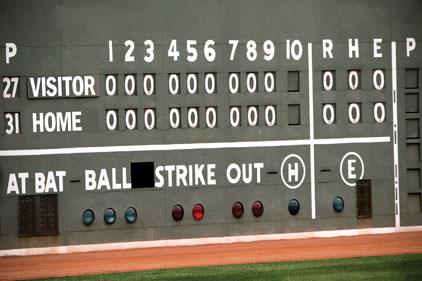Many safety experts will tell you getting to zero is no fantasy; it’s doable. In fact, it’s been done at many worksites. Besides, what’s the point of a safety program if not to eliminate all hazards, all injuries, all incidents? Anything other than zero is a concession, not acceptable. One amputation a year is clearly not acceptable. One crash, one explosion, one cave-in — not acceptable. It only makes sense. The alternative? “Gentlemen, this year the safety department has budgeted for three life-threatening injuries, two multiple-injury incidents, and sadly, one fatality. But after much discussion and consideration, these are considered acceptable losses.” Such talk is outrageous. Immoral.
Other safety pros will tell you, well yes, getting to zero may be, as the British say, a bridge too far for us. But no other goal is acceptable. We will only talk about zero. We want the workforce to think only of zero. If we miss, we’ll set the bar next year at zero. Our aim is true.
The pressure for numbers
“The pressure for numbers and statistics comes from people who don’t have anything to do, don’t know what it’s all about or how it happens, and are frustrated because they’re left out of what looks to be, at safe distance, something exciting.” This quote is from Karl Marlantes, a graduate of Yale, a Rhodes Scholar at Oxford University, and a Marine in the Vietnam War, taken from in his book, “What It Is Like To Go To War” (Atlantic Monthly Press, 2011). Not surprising for a book about Vietnam, Marlantes devotes Chapter 6 to lying. Mostly lying about numbers.
His quote above could be, and in some cases, is about safety. Think about it:
The pressure for numbers and statistics… in many companies, numbers and stats are all that is reported about safety. Just look at many glossy corporate sustainability reports and see what you find under “safety.” Numbers, that’s all.
The pressure comes from people who don’t have anything to do (with safety), don’t know what (safety) is all about or how it happens, and are frustrated because they’re left out (of the excitement when the numbers are achieved). “These people” remind me of CEOs who don’t know anything about safety, how it happens, don’t have anything to do with safety, but like to tell the board and the press, “We’ve had zero injuries this year.” They only relate to safety in terms of numbers.
Beyond the numbers game
Marlantes makes several points that can be related to safety. “Lies in the Vietnam War were more prevalent because the war was fought without meaning,” he says. “Lack of this overarching meaning encourages making things up, lying, to fill the gap in meaning.”
Many safety programs lack true meaning. Zero can be an impressive but empty substitute for meaning. Without meaning, without defining the strategic objective of safety work and its contributions to the bigger picture (say, the triple bottom line of people, profits and planet), safety can and does sometimes become an exercise in scorekeeping. The plant manager, supervisors, departments, units, whatever, are judged by the numbers. When this is the set-up, as in Vietnam, there is, as Marlantes says, “great incentive to lie.”
Trapped in a system
“When the system starts seeking goals that are out of line with individual values, the individual, who is usually trapped in the system, can either get hurt or survive by lying,” says Marlantes.
How many employees, supervisors, and managers feel trapped in a safety scorekeeping system that has no value to them, because there is no meaning behind it, no clear connection to the rest of the business? We all like to survive (to not get fired or disciplined for reporting an injury in the case of safety) and people lie all the time because of this, says Marlantes. Particularly if the only score that matters is glorious zero.
Lying as an act of resistance
“We kid ourselves when we think lying is abnormal behavior,” says Marlantes. “Lying may be bad, and we can even believe it is bad, but it is quite often the norm.”
In Vietnam, the ordinary grunt did not believe the kill ratio statistics were how you won a war, and lying about kills became a trivial and meaningless act for him, according to Marlantes. In the workplace, an ordinary employee may not believe keeping score is how safety improvements are achieved, and he or she concludes the safety program is trivial and meaningless. In fact, too many safety programs are trivial, filled with flavor-of-the-month gimmicks and slogans and contests that in the end have no connection to each other and are meaningless.
Where’s the whistleblower?
“Why don’t decent people stand up and scream” about a pressurized, overly-competitive measurement system, asks Marlantes. To paraphrase, he says he would not expect anyone to put their job or career on the line. “I probably should have spent more effort trying to change the corruption than bitching about it, but I was young (23) and very jaded.”
Certainly in today’s unpredictable economy, with layoffs, plant closures, salary cuts, etc., it’s easy to be jaded. So you lie low (pun intended) and remain silent. That’s the potential price for being overly zealous about zero injuries, making a big deal out of the score, and not explaining the meaning and value of zero, as it relates to both individual employees and their company.
Here’s what the message ought to be: We are striving for zero because this company is striving to be world class, best in class, in all facets of the business. We will give you the tools, the training, the support and the freedom to come up with your own ideas to reach zero injuries, zero customer complaints, zero product defects, zero downtime. If we don’t get there, we’re going to get damn close enough to make an unmistakable positive difference for you personally and for the business.
Editor’s Note: Karl Marlantes is also the author of Matterhorn, a novel based on his combat experiences in Vietnam that some critics claim is a classic of war literature.




